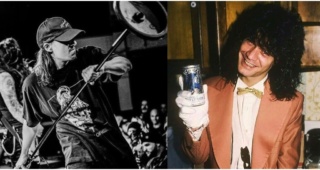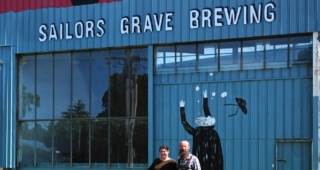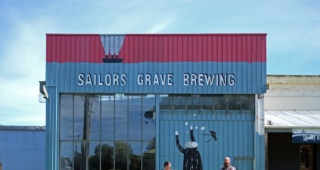It’s fair to say that a disproportionate amount of Japan’s craft beer is shit.
There, I said it. Every trusted beer enthusiast with whom I’ve discussed Japan’s craft has said it in one way or another, too.
It’s not all shit—settle down, certainly not all of it—but keg for keg, glass for glass, Japan just isn’t there yet. It hurts to say it and it’s nothing personal, for Japan is one of my favorite places in the world and the Japanese are some of the world’s loveliest people. I want the domestic craft beer to be consistently great, and given Japan’s deserved reputation for perfectionism I have no doubt that it will be eventually.
Right now it is not even close, however, and that’s okay. It’s easy to forget how recently craft beer arrived in Japan (and in Asia), at least on today’s scale, and as they say Rome wasn’t built in a day.
To that end, it’s partly a case of too much, too soon as so many eager, yet inexperienced brewers at new breweries push out unrefined products not yet ready for public consumption. Improvement comes not only with time and practice, however, but also through qualitative feedback and honest self-reflection—and it’s these latter two points that, perhaps, are lacking in Japanese craft circles and stunting growth.
In other words, the best way to save face may be to lose it a little.
“In Japan there’s kind of a ‘brewer is the god’ thing,” says Hamilton Shields, co-owner and manager of Mikkeller Tokyo. “It comes down to taste, and a lot of people here just don’t have the taste for craft beer yet. If you then add the whole ‘brewer is god’ thing in the mix, then maybe the brewers aren’t reflecting on their beers.”
“People are very reluctant to criticize publicly, too, so we’re all left drinking a shitty beer and smiling about it,” he continues. “I don’t need to go out and tell a brewer his beer sucks; that’s not what I mean and that’s not what it needs to be about. It’s just if the beer is shit don’t buy it and pretend it’s okay.”
Following stops at Shibuya’s Liquor Shop Hiranoya and Small World Records & Café in Setagaya Shields and I settle in at Pigalle Tokyo, an eccentric shoebox-sized Setagaya beer bar with six taps and around 70 bottles. Multi-colored ornaments hang from the ceiling, and a curious hodge-podge of flyers and framed prints—movie handbills, vintage portraits, a robed skeleton drinking ale, or maybe it’s blood—decorate crimson walls. There’s a mounted buck behind the bar, and in the itty-bitty bathroom “toilet speakers” bumping EDM rattle a The Brown Bunny poster tacked above an electronic loo.
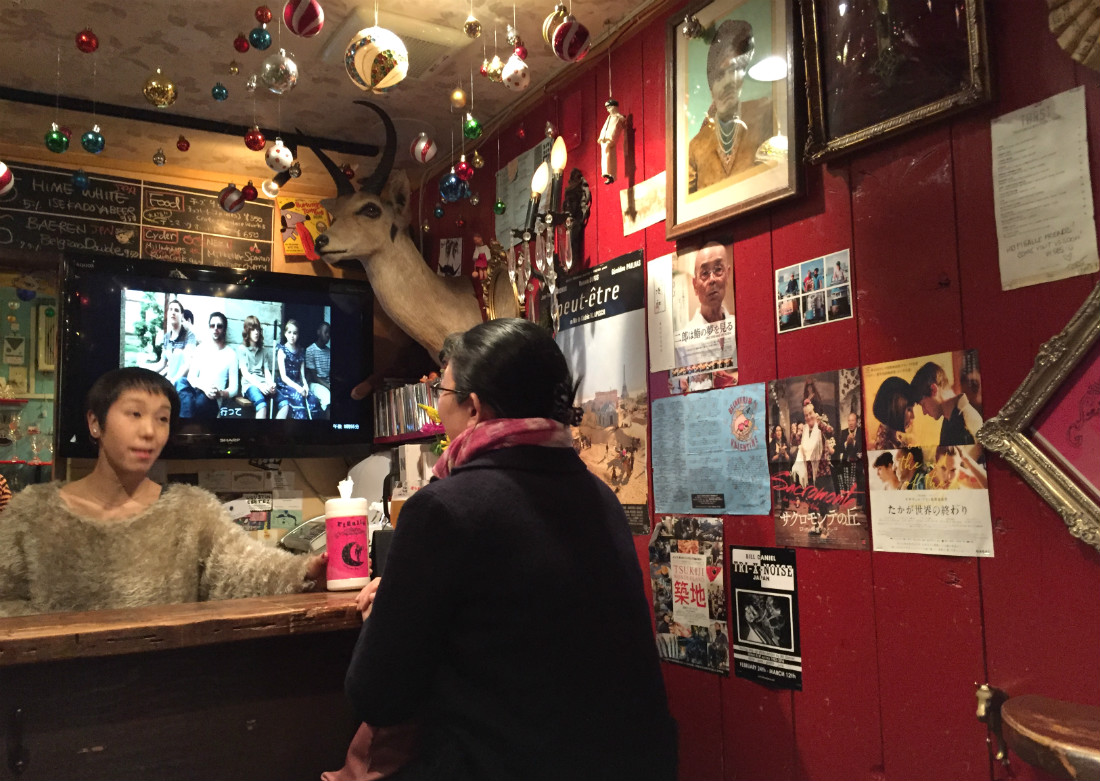
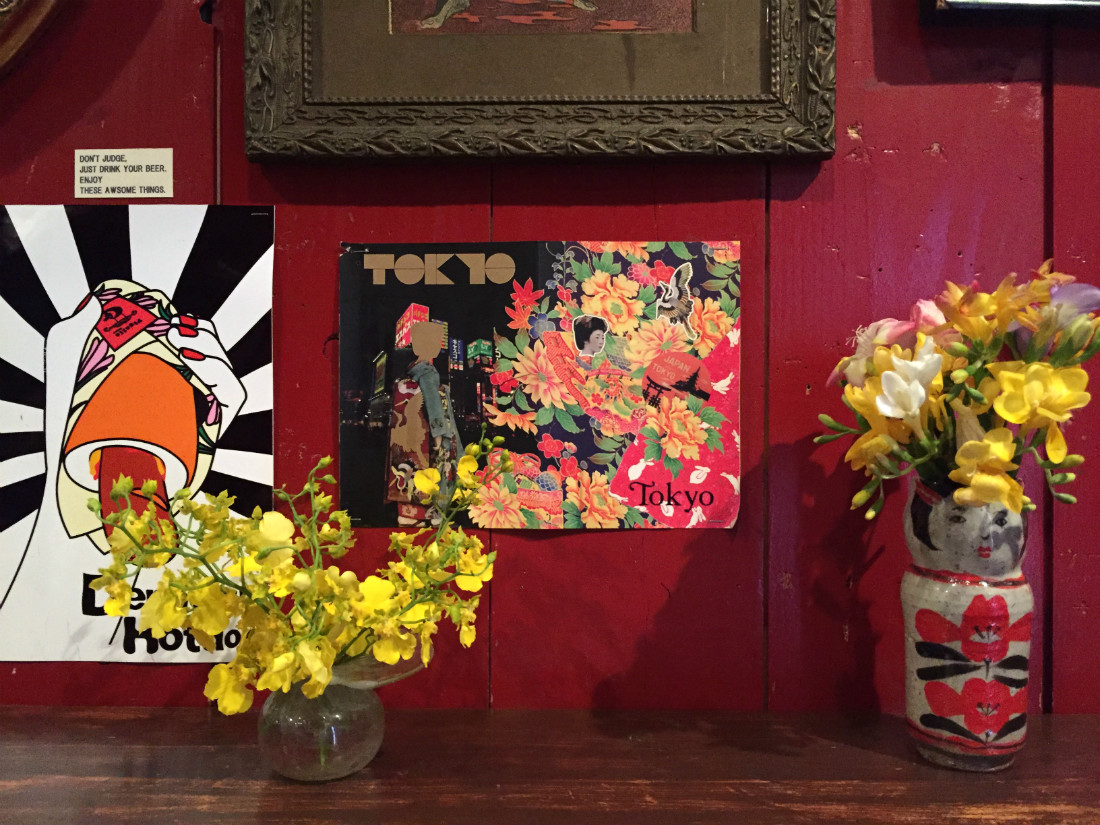
It’s a cozy place to share a bottle of, say, Dama Bruna, a sour Flemish red brewed by LoverBeer in Marentino, Italy. Shields selects it from Pigalle’s help-yourself refrigerators. “They are so good with tourists and they take such good care of people,” he says of Pigalle’s wife-husband owners. “You come here and you feel like you’re in Japan, and that’s such a good experience for people.”
When conversation veers back to the topic of Japanese craft and why so many breweries come up short, Shields hits on another monkey wrench possibly clogging the gears of progress. “It’s not something a lot of people talk about, but there’s a strong fiscal incentive to just selling [the beer] and not being too vocal when things suck,” he says. “In Japan, it’s very difficult to throw away beer that you’ve brewed because of the way the taxes are structured. You have a very high incentive to think your beer is good enough to release because otherwise, as far as I know, someone from the tax office has to come and watch you pour the beer down the drain. If they don’t you get taxed for it, or they can accuse you of selling it sans taxes.”
Lest you get the wrong idea, nobody is throwing an entire country’s beer industry under a bus here. Facts are facts, and we discuss the middling state of Japanese craft as two pro-Japan beer enthusiasts attempting to make sense of the surprising faults and to identify a positive, proactive path forward. A change in beer tax regulations, it seems, could be a good start.
There’s so much unfulfilled promise in Japan, even as there are many breweries who have already figured it out or are well on their way to doing so. Shields ticks off personal favorites that include Marca Beer Factory (Osaka), Y Market Brewing (Nagoya), Brewery Songbird (Kisarazu-shi), Harvestmoon Brewery (Maihama), and Yorocco Beer (Zushi-shi); I’d add Minoh Beer in Osaka, DevilCraft Brewery in Tokyo, and Sankt Gallen Brewery in Atsugi-shi, too.
Shields is a fan, in particular, of Shiga Kogen’s barrel-aged ales, of Shonan Beers’ black IPA (“really dope”), and of Ise Kadoya Brewery’s oyster stout; I appreciate the consistency of Kiuchi Brewery’s Hitachino Nest beers, and Yo-Ho Brewing Co has its moments. This is only a partial list of the fine Japanese beers and strong Japanese breweries we discuss.
We’re both fired up, too, about the ways in which seasoned Japanese brewers could successfully incorporate more of the country’s high-quality domestic ingredients into their beers. Many do it already and some do it well, but not enough.
“I think there’s so much opportunity in Japanese citrus. Yuzu is one of like a hundred citruses most people haven’t tried, and I’m only getting into and learning about them myself,” says Shields. “It’s really exciting. I think once there’s some more brewery maturity here, and more brewers with experience—you know, more young brewers who’ve worked at a couple breweries and been out there on their own—and more feedback, then we’ll start to see Japanese twists on a lot of stuff.”
Mikkeller Strikes Back
Shibuya is one of the first points of contact in Tokyo for many visitors and a key link in the city’s ridiculous trains/subway network, which for its combination of exacting efficiency and sheer scale deserves consideration as the 8th Wonder of the World. Well over 2 million people traipse Shibuya Station alone daily, and during much of the day upwards of 2,500 humans navigate the Shibuya Crossing intersection every time the lights turn green for pedestrians. (It’s a heartbreaking story, but Haruki Murakami’s account of the gutless 1995 sarin gas attack on the city’s subway system provides a fascinating glimpse into the lives of Tokyo’s everyday commuters and conductors.)
For all the lights and activity and noise and wonderful insanity in the heart of Shibuya, however, there is still quiet and mystery in the many winding alleyways and back streets snaking off from the main drags. One such place is Hyakkendana, a scant 10-minute walk north from the station. Its main entrance off Dogenzaka marked with a large red gate, this sloping street is home to dimly lit izakayas, a few old-school bars noted for their refined musical taste, and one of Shibuya’s numerous love hotels. At the end of the street, where it curves left, there is a small, peaceful Shinto temple on one side and a temple of another kind on the other.
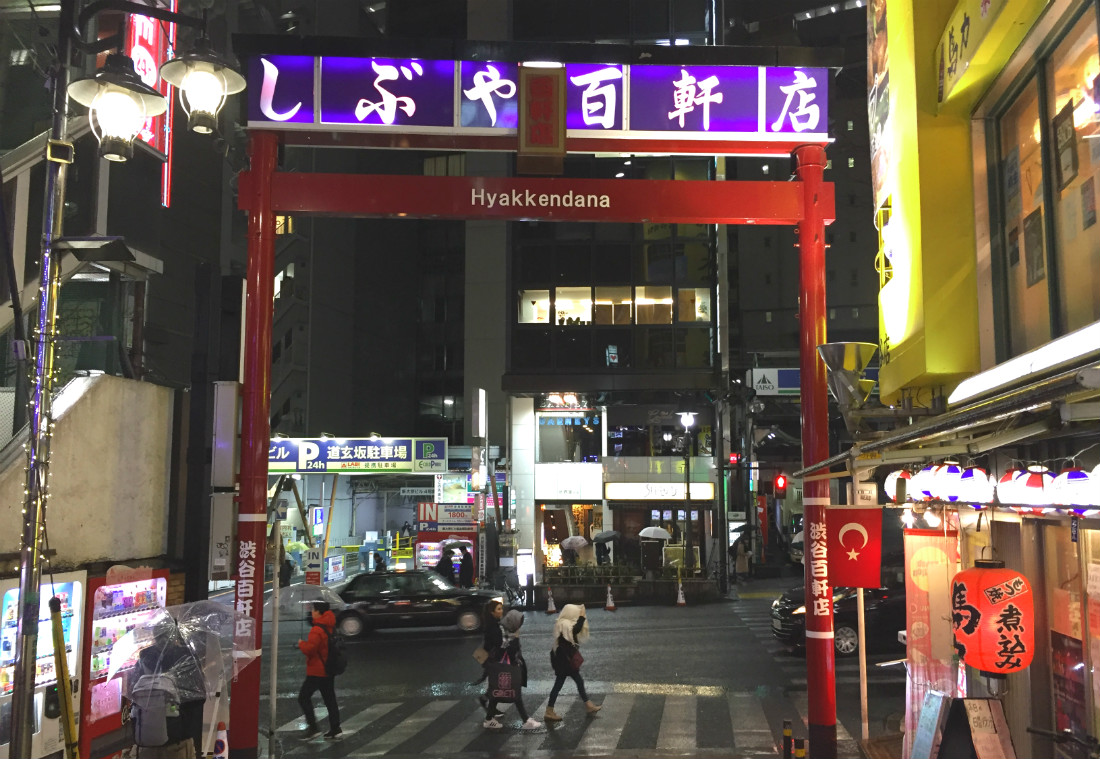


“We had this one customer, an illustrator, who started coming in a lot. He was always so friendly, talked to the staff, drank craft beer but didn’t really care about it, you know?” says Shields. “I was caught up in all the drama and didn’t notice him as much at first, but then one day we both left the bar and I gave him a head’s up that we were going to close in a couple days. He immediately burst out crying—literally crying—and said that he saw how hard we were trying, and that he had this challenge once that he himself wasn’t able to overcome and that he really wanted to see us overcome ours.”
The original Mikkeller Tokyo, a partnership between the Danish brewery and Norwegian coffee shop/café Fuglen, opened in 2015 with much fanfare, then closed with acrimony between the two parties just six months later. Shields, whom I first met at Mikkeller Tokyo’s ’15 launch party, was left in limbo over the next year-plus as the brand bounced around between pop-up locations before, finally, landing a perfect little place on an atmospheric little corner of Hyakkendana in Shibuya. “So many people invited us into their spaces and homes, and that kept us going and let us go from this failure to something that’s actually become kind of cool,” he says. “We’re pretty excited to kind of give back.”
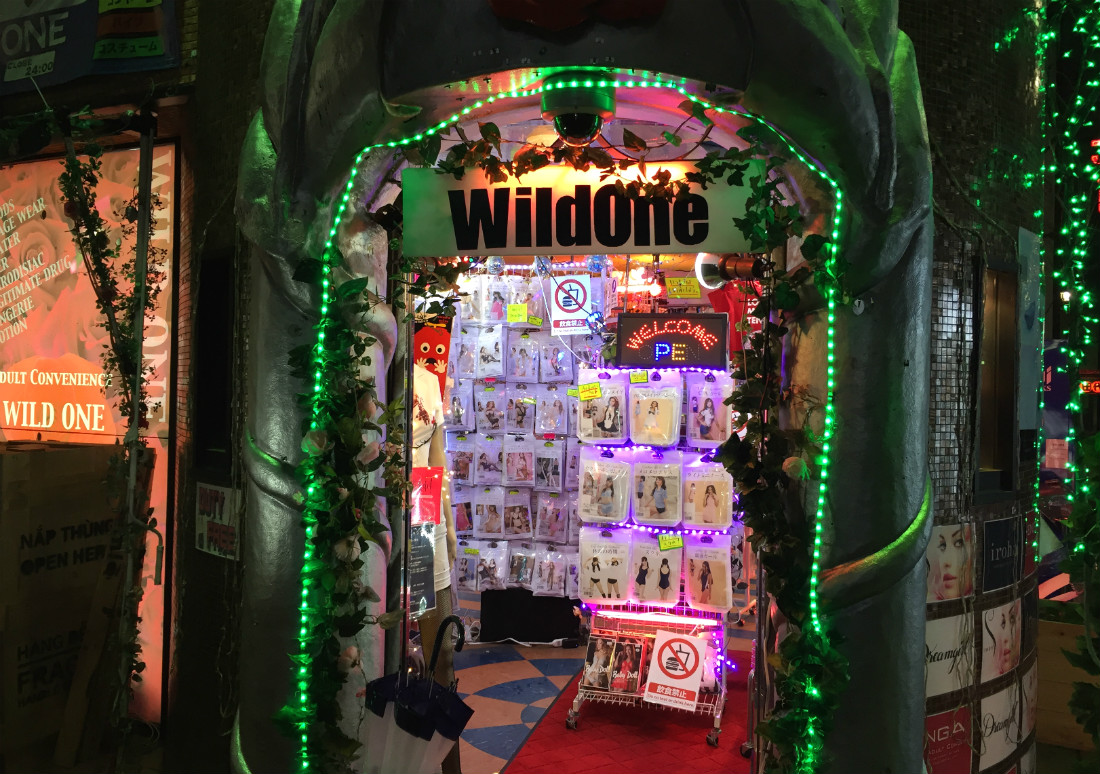

Mikkeller Tokyo, one of the brewery’s five bars in Asia, reopened in April 2017 with 20 taps, a Rick Astley-themed bathroom (no shit), and a reinvigorated spirit. Shields, a self-described ex-ski bum from the States who speaks fluent Japanese, gets animated when we discuss the bar at Pigalle, about six weeks before the relaunch.
“I think we’re in a place to do things different. Part of the reason I took the job after grad school and moved back to Tokyo, which at first I wasn’t so keen on, was that I could have an impact on Tokyo, a place from which I had taken a lot at that point,” he says. “One of the most important things we can do right now is to get new people into craft beer, and I think we have the authority to come at that in a different way. I don’t want to make Mikkel a saint, but I feel like he has this thing he wants to do, and he has given us so much leash to do whatever the fuck we want.”
[Ed. Note: Mikkel Borg Bjergsø is the owner of Mikkeller, a so-called “gypsy brewery” that brews its beers at host facilities, somewhat like how Brewlander & Co in Singapore operates.]
The bar’s draft list, of course, leans heavily on Mikkeller beer, including three exclusive house brews—when this went to print 14 of the 20 beers on tap were from either Mikkeller or Warpigs, the latter a Copenhagen brewpub and collaboration between Mikkeller and Three Floyds Brewing Co. In line with what Shields promises at Pigalle, however, Japanese craft beer flowed from four of the remaining six taps, including Brewery Songbird’s Cuvée de Primtemps and a Hansharo Beer barleywine aged in Ichiro’s Malt whiskey barrels.

“Another responsibility we have going forward is highlighting the Japanese brewers who are actually making crazy shit,” he says. “When people walk in our bar I want [the Japanese beers] to be amongst the best five beers in Japan. I want you to have something you would not have necessarily had anywhere else, whether it’s a lager or a barrel-aged or whatever. We can bypass some channels to get some smaller brands out there and pull up some things we’re really excited about.”
Mikkeller for Medals
The Summer Olympics are coming to Tokyo in 2020. It’s obviously a big deal for the city and Shields hopes it’s a big deal for the Mikkeller bar. In fact, he tells me that he already has one idea to help woo the athletes. “Maybe we’ll offer a free large-sized beer for every gold medal winner who brings in their medal,” he says, “and a small-sized beer for the silver medals.”
And what about those who, in the famous words of an Olympics chairman on The Simpsons, win “a shameful bronze?”
“We’ll give them a taster… hahaha… one taster.”
———————
Mikkeller Tokyo is located at 2-19-11 Hyakkendana, Shibuya, Tokyo. Open Monday – Thursday 3pm – 12:30am, Friday 3pm – 1:30am, Saturday 12pm – 1:30am, and Sunday 12pm – 12:30am.
Pigalle Tokyo is located at 2-15-8 Taishido, Setagaya, Tokyo. +81 3 6805 2455. Open Tuesday – Thursday 4pm – 1am, Friday and Saturday 4pm – 2am, and Sunday 2pm – 10pm. Closed Monday.
>> Next Read Part I: In the Shibuya Backstreets, an Ex-Salaryman Taps a New Life
>> Then Read Part II: In Setagaya, It’s a Small World After All
All photos taken by the author and cannot be reused, reprinted, or otherwise shamelessly stolen.



